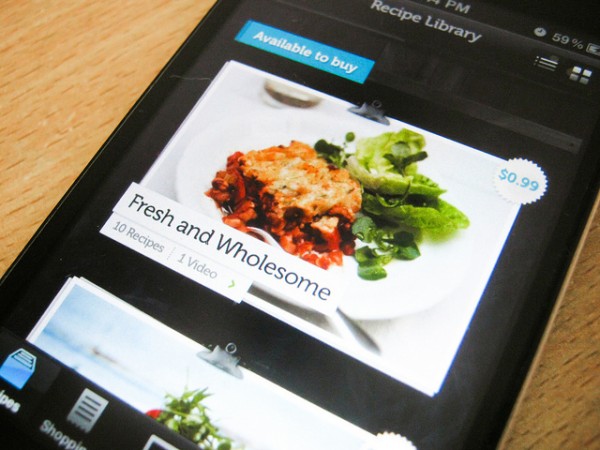Recent research shows consumers in North America and Europe waste about 209 to 253 pounds of food per person every year. This costs the average family of four roughly $600 a year. Globally, one-third of the food produced for human consumption is lost, about 1.3 billion tons. With millions of humans malnourished or starving to death every day, this food waste simply can’t continue.
According to a report recently released by the Natural Resources Defense Council [PDF], 40 percent of U.S. food goes uneaten, the equivalent of $165 billion wasted each year. That’s enough to feed millions of Americans every year. So the problem isn’t a lack of food, it’s a lack of know-how, connection, and infrastructure to get it into the hands of those who need it. How serendipitous that mobile app technology is adept at creating all of those things! Here are four clever smartphone apps that help users do their part to minimize food waste while having a little fun.

Leloca – Restaurants have the ultimate “perishable inventory” – fresh food. So when there are open tables at a restaurant food is wasted, as well as utilities, staffing and money. Leloca helps reduce the amount of fresh food that’s wasted by offering a platform for restaurants to activate dining discounts on Leloca when they have open space. The discount will be seen by users in the area, bringing diners in and thereby minimizing the restaurant’s waste. Meanwhile the user gets a discount for a meal at a top restaurant. Leloca’s deals, typically 30-50% off, are free to secure and are to be redeemed within 45 minutes.
Gojee – This is a recipe sharing site driven by food photography, but other than browsing through mouthwatering photos, users can also search for recipes by ingredient. The app allows users to type in the ingredients in their cabinets or fridge and it will return recipes that feature those ingredients, making it easy and fun to minimize spoiled food in the home. Gojee has about 10,000 recipes aggregated from over 300 contributors on the web.
Green Egg Shopper – Users can sort their shopping list alphabetically, by category or by priority (low, medium, high), as well as program in use-by dates, see built in categories of shelf life (short, medium, long) and much more. Beyond organization, the app helps to avoid over-buying, minimize food spoiling and even save a little paper on grocery lists. (Made in the UK, so monetary units and volume are GBP/metric).
222 Million Tons – This app was inspired by the approximately 222 million tons of food wasted each year and the question of how one can get through a whole bundle of celery without getting sick of it. 222 Million Tons develops one-week menus and shopping lists according to family size, whether it is one or nine. The app helps people reduce waste (so all of that celery is used) while still being able to enjoy variety and excitement in their diet.
Tell us: Have you ever used an app to reduce waste, whether it’s food, fuel or energy? Share your experience in a comment!